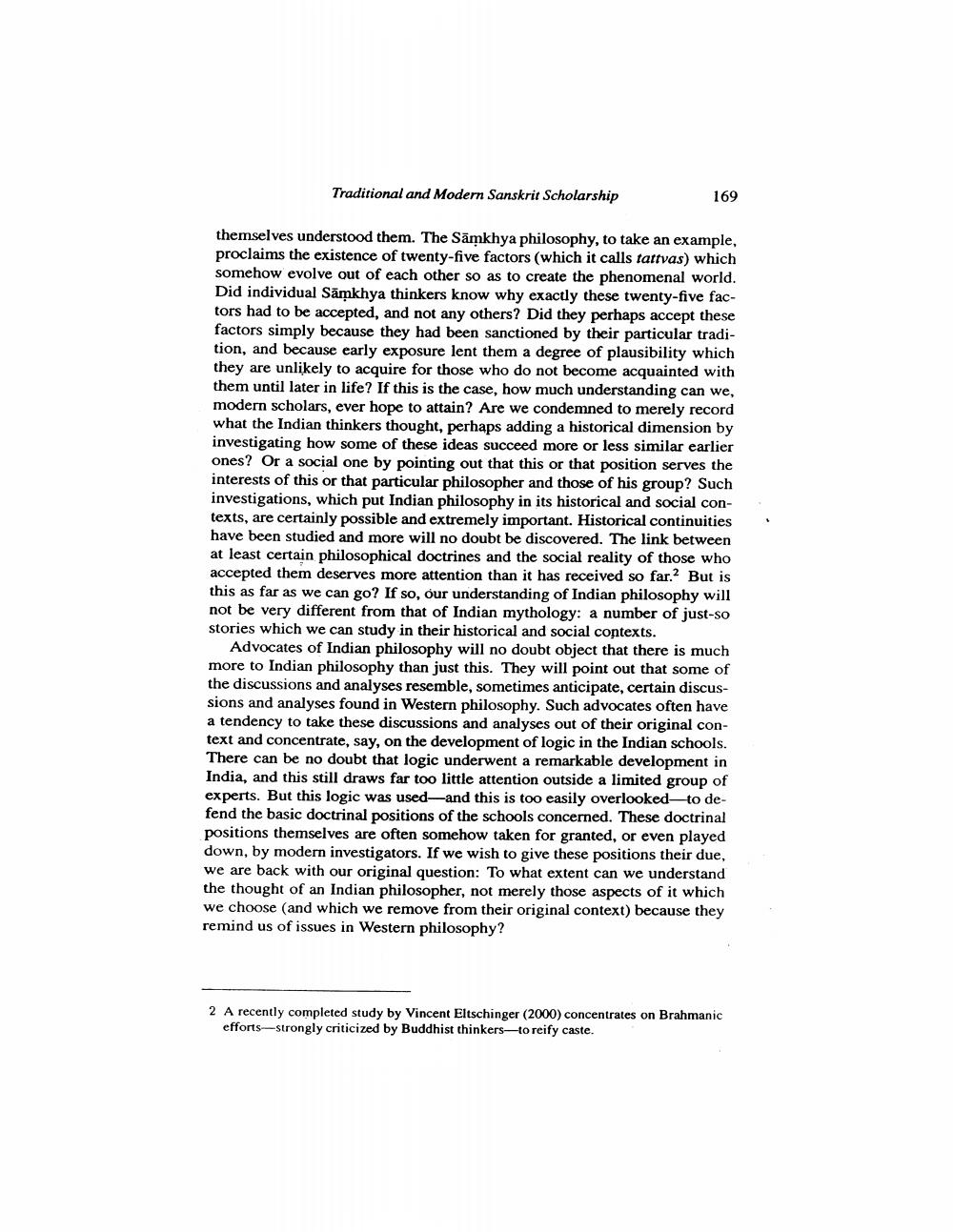________________
Traditional and Modern Sanskrit Scholarship
169
themselves understood them. The Samkhya philosophy, to take an example, proclaims the existence of twenty-five factors (which it calls tattvas) which somehow evolve out of each other so as to create the phenomenal world. Did individual Samkhya thinkers know why exactly these twenty-five factors had to be accepted, and not any others? Did they perhaps accept these factors simply because they had been sanctioned by their particular tradition, and because early exposure lent them a degree of plausibility which they are unlikely to acquire for those who do not become acquainted with them until later in life? If this is the case, how much understanding can we, modern scholars, ever hope to attain? Are we condemned to merely record what the Indian thinkers thought, perhaps adding a historical dimension by investigating how some of these ideas succeed more or less similar earlier ones? Or a social one by pointing out that this or that position serves the interests of this or that particular philosopher and those of his group? Such investigations, which put Indian philosophy in its historical and social contexts, are certainly possible and extremely important. Historical continuities have been studied and more will no doubt be discovered. The link between at least certain philosophical doctrines and the social reality of those who accepted them deserves more attention than it has received so far.2 But is this as far as we can go? If so, our understanding of Indian philosophy will not be very different from that of Indian mythology: a number of just-so stories which we can study in their historical and social contexts.
Advocates of Indian philosophy will no doubt object that there is much more to Indian philosophy than just this. They will point out that some of the discussions and analyses resemble, sometimes anticipate, certain discussions and analyses found in Western philosophy. Such advocates often have a tendency to take these discussions and analyses out of their original context and concentrate, say, on the development of logic in the Indian schools. There can be no doubt that logic underwent a remarkable development in India, and this still draws far too little attention outside a limited group of experts. But this logic was used-and this is too easily overlooked to defend the basic doctrinal positions of the schools concerned. These doctrinal positions themselves are often somehow taken for granted, or even played down, by modern investigators. If we wish to give these positions their due, we are back with our original question: To what extent can we understand the thought of an Indian philosopher, not merely those aspects of it which we choose (and which we remove from their original context) because they remind us of issues in Western philosophy?
2 A recently completed study by Vincent Eltschinger (2000) concentrates on Brahmanic efforts strongly criticized by Buddhist thinkers-to reify caste.




